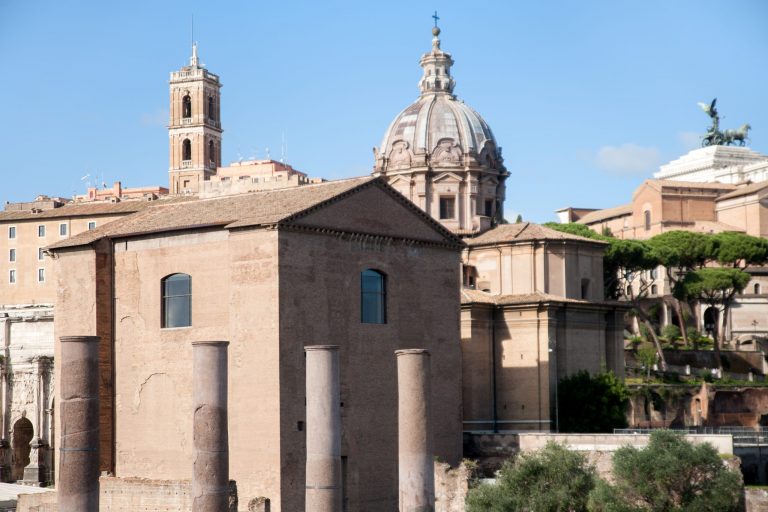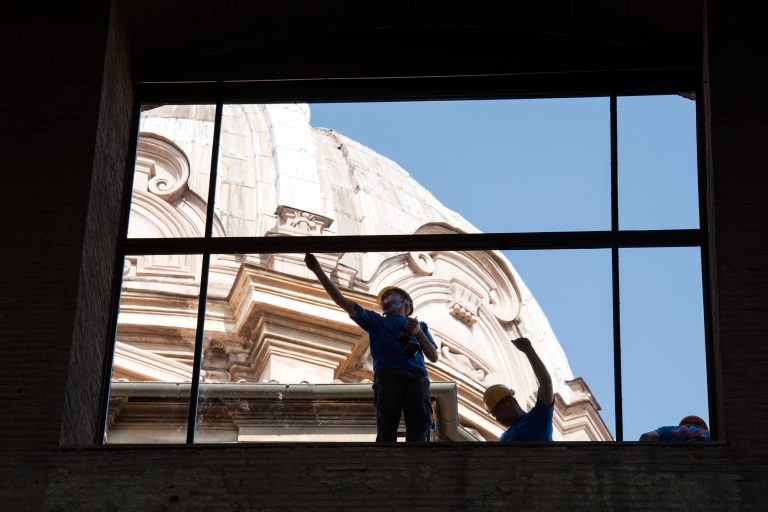Curia Iulia
The building owes its name to the assemblies of the ” curiates”, the citizens selected on the basis of the census, which took place at the Comizio; it was here that the first curia of Rome opened, the Curia Hostilia, built according to legend by Tullus Hostilius, third king of Rome in the 6th century BC. Damaged by fire in 52 B.C., Julius Caesar refounded the new Curia, changing its orientation and annexing it to his personal Forum. The work was then completed in 29 B.C. by Augustus but already in 94 A.D. at the time of Domitian there was a first restoration, followed by a more important intervention due to Diocletian, following the disastrous fire of 238 A.D.: of this restoration are still visible, inside, the splendid opus sectile floor and the wall decoration with polychrome marble niches. The large interior space respected the proportions recommended by Vitruvius for the curias: the height (21 m) was therefore about half the sum of length and width. The hall was divided into three sectors, with three wide and low steps on the right and left, where about three hundred seats for senators were placed.
Outside the monument is today a large brick building with stern shapes, characterized on the façades, front and rear, by tympanum-shaped endings. The front façade had a lower part covered with marble slabs and an upper part decorated with rusticated stucco imitating marble. Under the three large windows a series of square holes are visible, traces of insertion of the beams of a portico and, on the sides of the portal, the rectangular footprints left by burials inserted in the Middle Ages, when the building housed the church of St. Hadrian founded in the 6th century and the whole area was walkable at a higher altitude. The bronze door is a copy of the original brought to San Giovanni in Laterano in the 17th century. On the walls, in particular on the entrance wall, remains of pictorial fragments from the Byzantine era are visible, which testify to the period when the building was transformed into a church.





